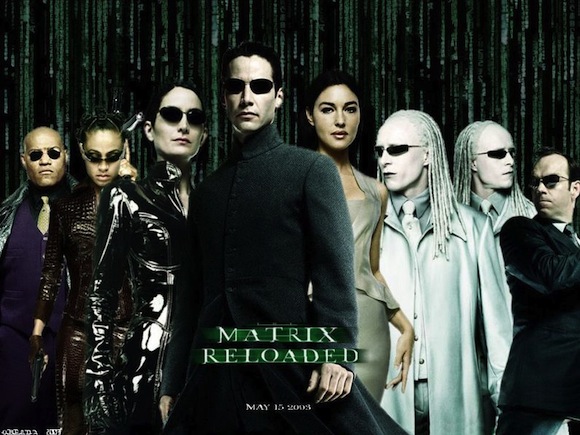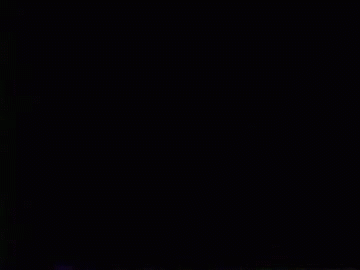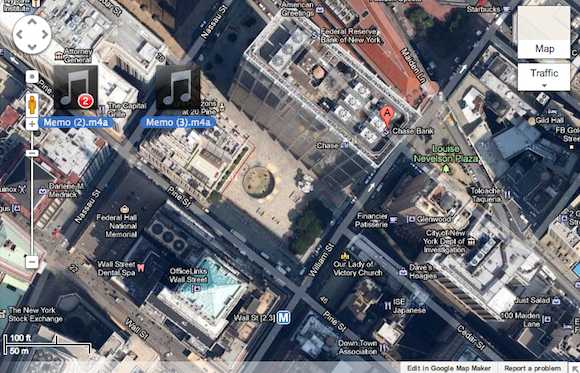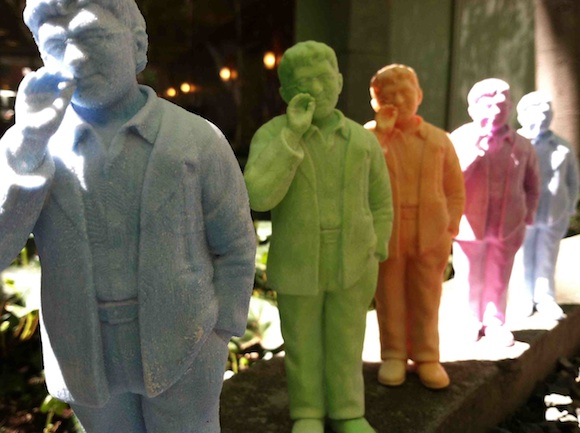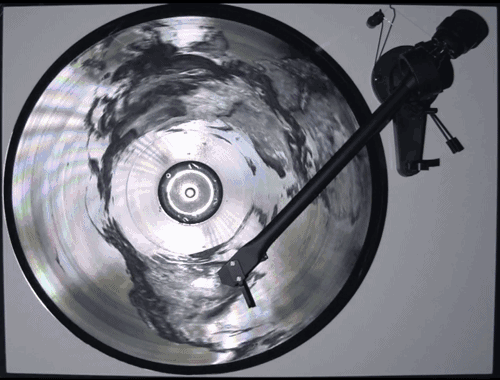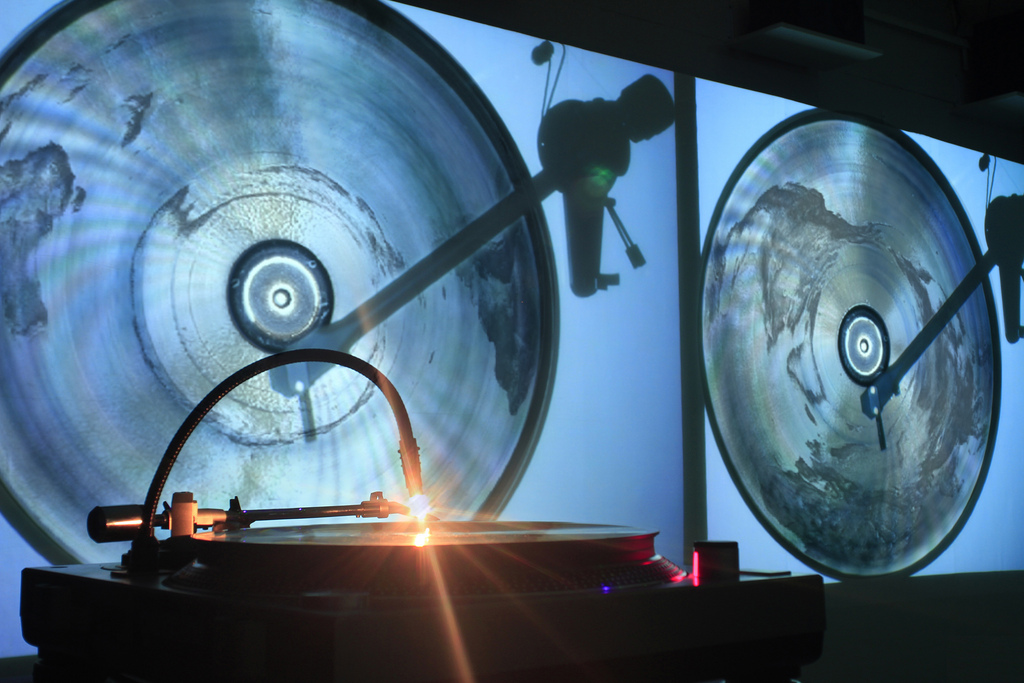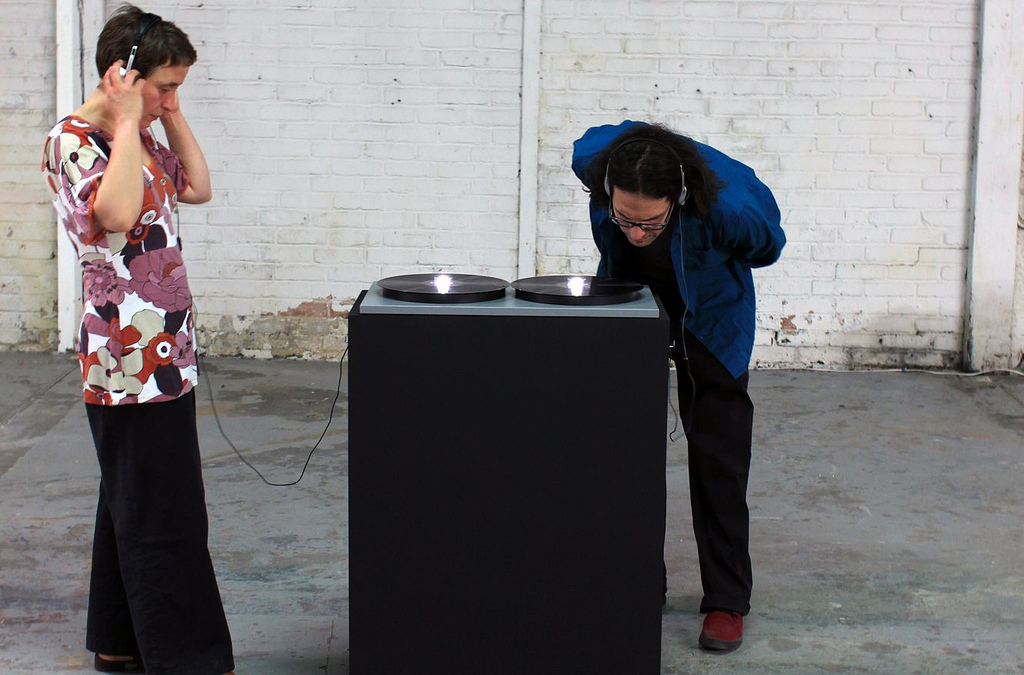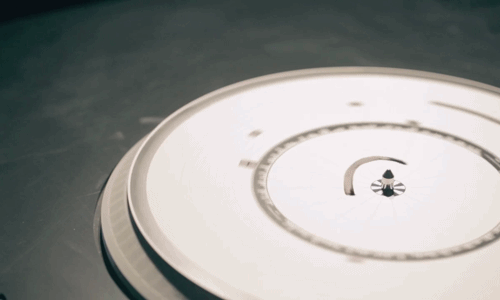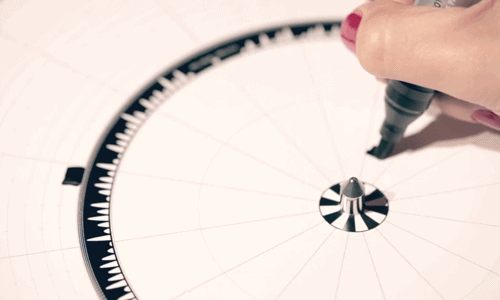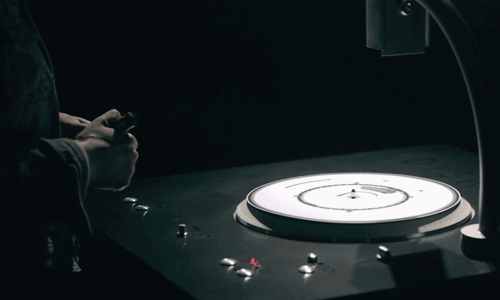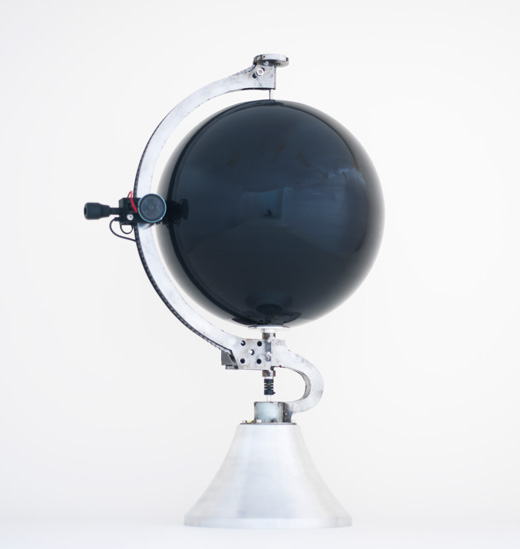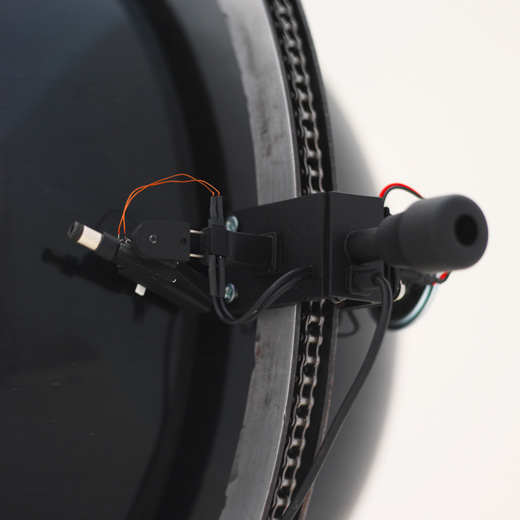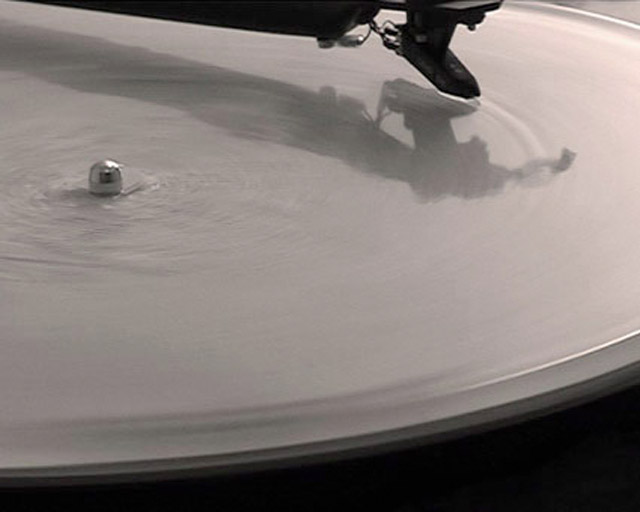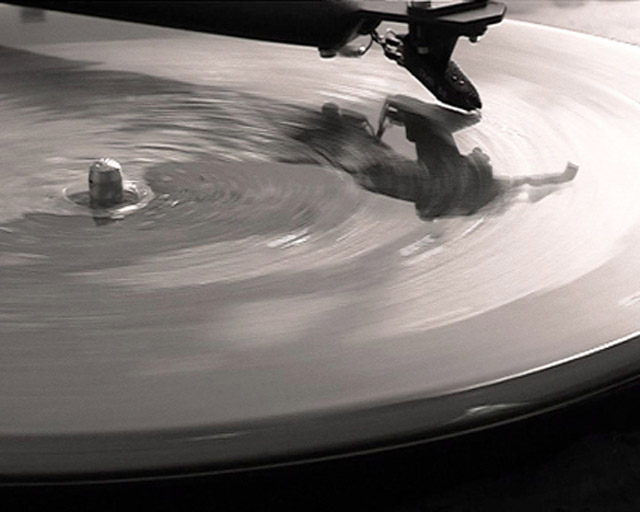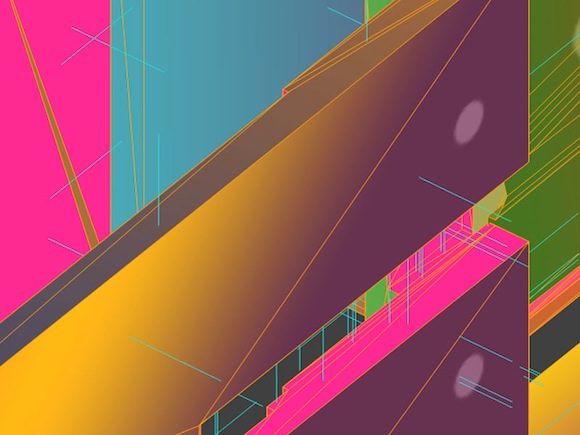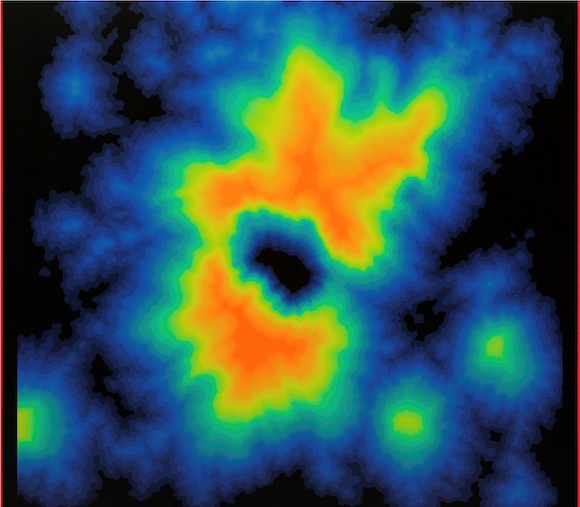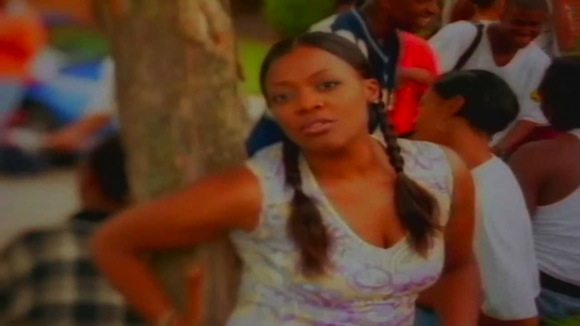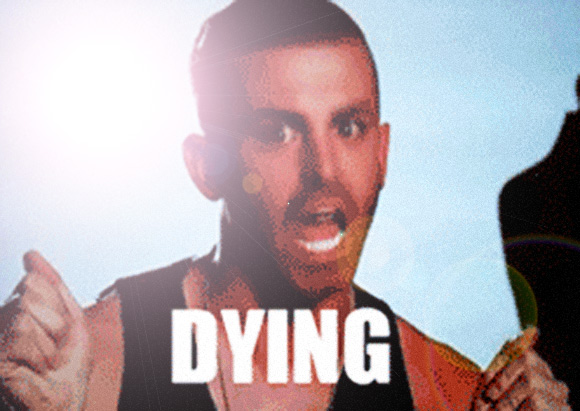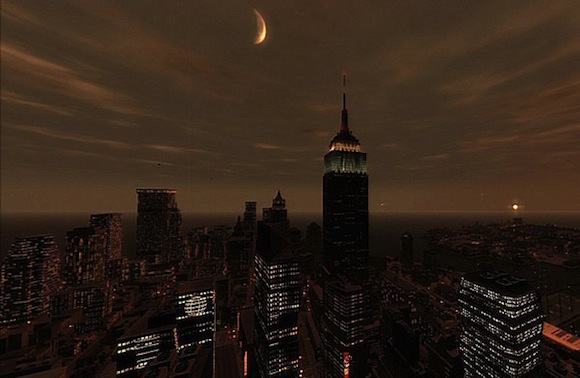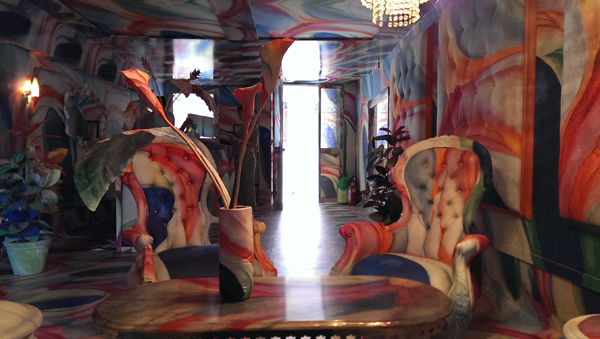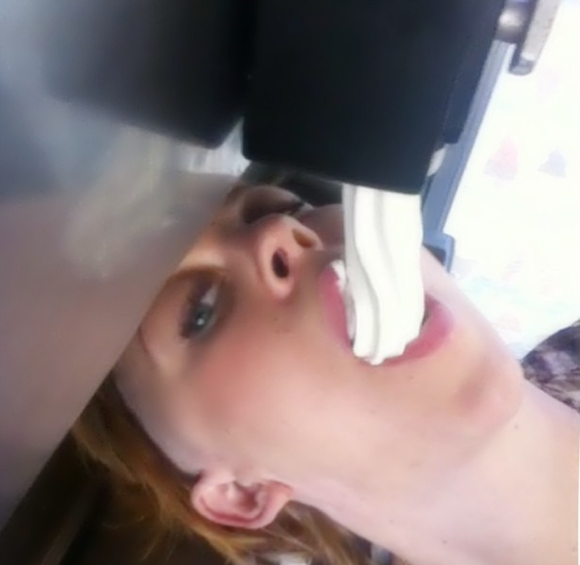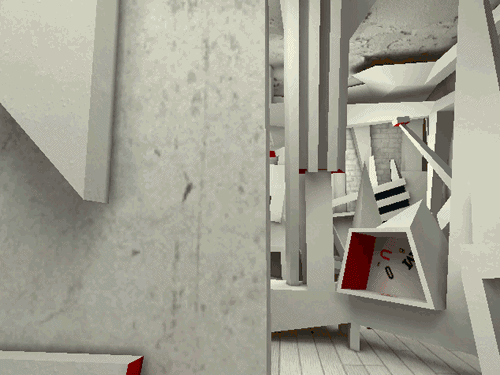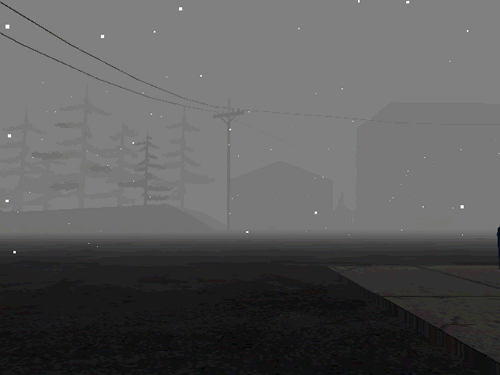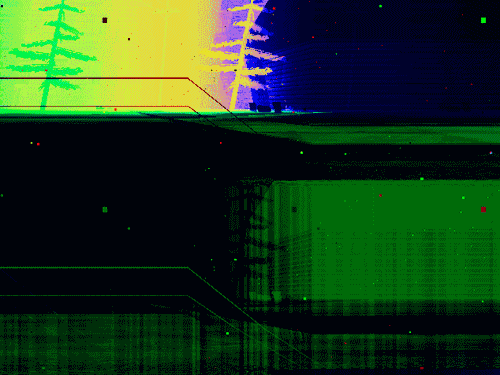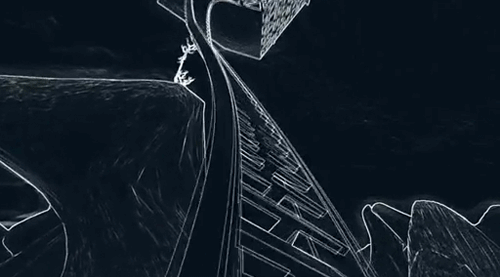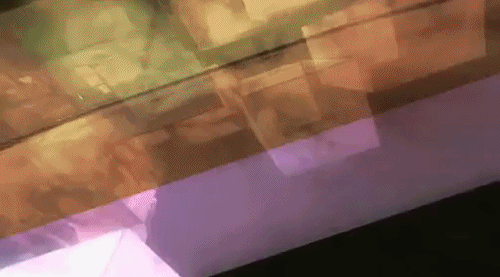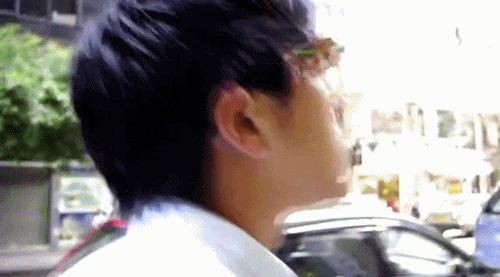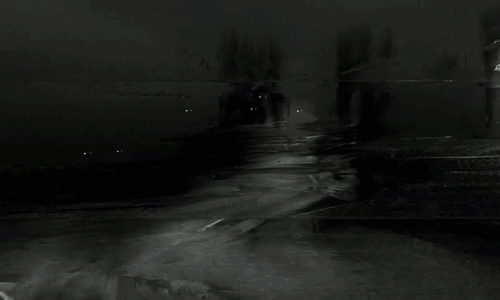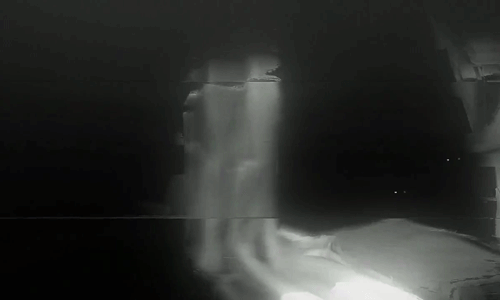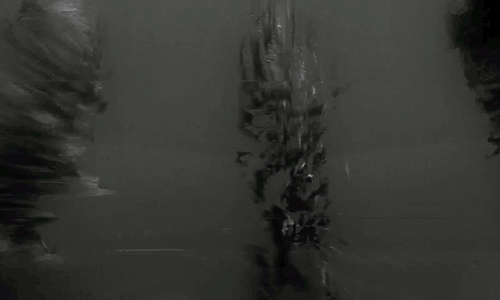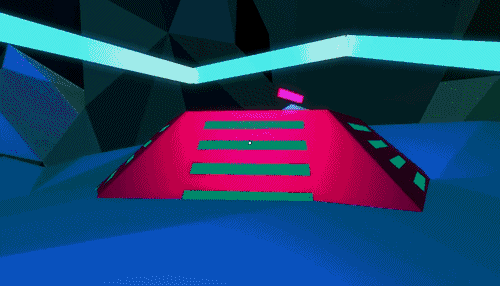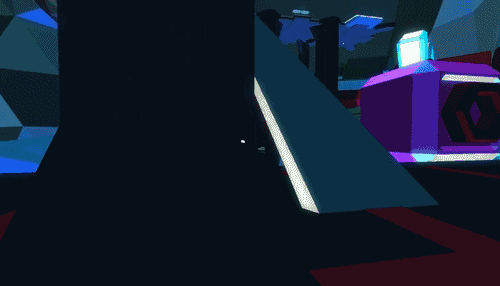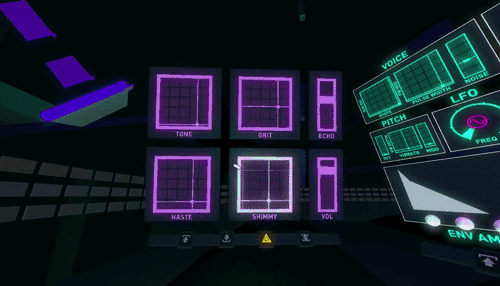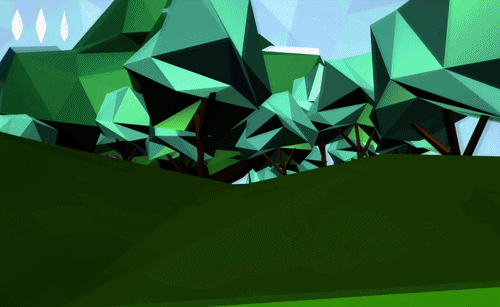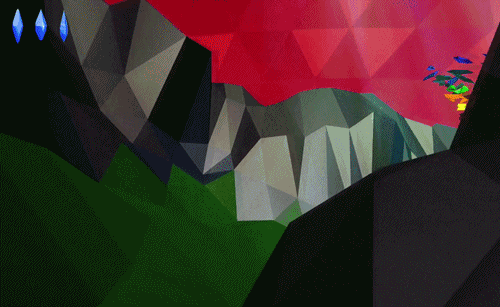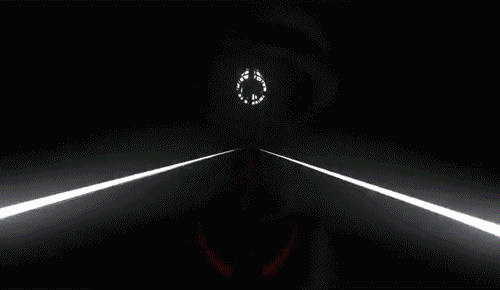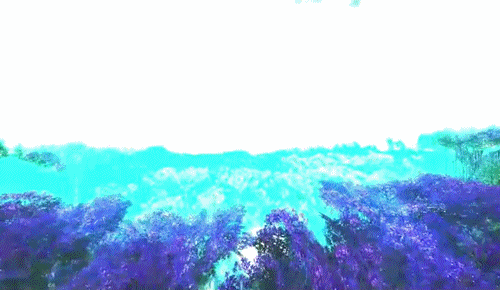Lorne Lanning worked for Jack Goldstein in the mid-1980s at a time when the artist began to create highly detailed paintings of technological and scientific imagery that foregrounded the visual artefacts of computer vision. In this interview, Lanning discusses the thinking and the process behind this body of work, which is represented in several works (completed after Lanning's tenure with Goldstein) in the exhibition Jack Goldstein x 10,000, on view through September 29, 2013 at The Jewish Museum in New York. Lanning also explains how his work with visual effects for Goldstein led him, via the aerospace industry, to a successful career as creator of the OddWorld video game series.
![]()
Jack Goldstein, Untitled, 1988, acrylic on canvas. Courtesy Vanmoerkerke Collection, Ostend. © Estate of Jack Goldstein.
MC: How did you begin working with Jack Goldstein?
I met Jack--he was teaching at School of Visual Arts--I believe it was ‘85. I started working with him in maybe late ‘85 or early ‘86…
I was an illustration student at School of Visual Arts--I had seen his paintings at the Whitney Biennial, and at various museums, and I was just blown away. I showed him my work and I was making all these comments, you know, "I aim to improve this way and that way," and he goes, "You paint just fine, you just have no ideas." And that's Jack in a nutshell.
He said, “You know why don't you work for me, you paint great, and I got a couple of lofts over in Brooklyn.” At the time Ashley Bickerton was just leaving and getting his own success... It was quiet, and I think at the time Jack was going through a down period in his own life. He had ridden the wave of [his early success], and he was very resentful at the time of the art world. I think it was making him pretty bitter, and making him more boisterous, and at the same time he was having some addiction problems.
MC: What sort of work was he making at the time?
When I came in, it was at the very end of his lightning sort of period. The last real piece of that body of work was the cover of Art in America, I think it was a missile launch, something like that. Jack always believed in working straight from photos, he was after actual events that couldn't be recorded with the human eye. That's something he referred to as “the spectacular instant.” There was a cover of Art in America, I believe it was 1985 or so, and that was the last painting that I saw being done at the studio that was of that era.
He said to me, " I can't be the lightning guy for the rest of my life." He was always brutally honest not only with himself but with everyone else as well. He said, "I need to escalate this work into a place where paintings don't feel like they're being made by man. I want them to feel as though they are being output by computer. But I want them to have the artefacts of technology embedded in them." Perfect constructions made imperfectly.
He was looking towards what the computer was doing to imagery, whether it was radar telescopes or ... images that were coming out of particle collision. He would subscribe to Scientific American, he would subscribe to different science journals, and he was looking for that new extension of the human eye that was only brought to us through new technologies. He wanted to re-present those on canvases as though they really came out of a computer. Like, came off an assembly line rather than having the human hand anywhere visible.
And then, of course, he had a profound set of reasons behind that approach... The ideas swarmed around works by authors like Paul Virilio, the French philosopher and political critic. He was very into what was happening in the intellectual French scene at the time.
The approach to the work was trying to escape from... what he called "Cro-Magnon man paintings." [laughs] Which is the UGHHH! UNNGGHHH! gestural, splat. Whether it was Schnabel's work or David Salle's work, he was very anti the directions they were heading. And he really believed that our society was living in a matrix-like illusion, and that it was being fabricated by a powerful shadowy elite that was basically providing most of our stimulus input through media.
He had an interesting way of looking at the world, and he wanted his work to kind of punch through that.
MC: Could you talk through the process behind one painting that you worked on during that period?
You know it's funny, because he never titled the paintings. So I can't speak to a name [laughs].
There was a show at John Weber, [at a time when] Jack was starting to be recognized as the sort of grandfather of the Neo Geo. This is what was going on in his own psychology, but I think he was losing hope. So he was really going for it, pushing the paintings into an unexpected direction.
He wanted to get this imagery that almost had a more pixelated effect, that it was carrying the artefacts of the computer’s processing of vision. I believe one of the first ones that we started working on like this was an AIDS virus. Now it would never be said in the title, because he never titled them. His previous works were largely hand-airbrushed, very tight, many mixtures of colors to get a photographic effect. And the older black-and-whites of the streaked missiles over Dresden--there's a number of World War II photographs that he had altered very slightly--if you look at those, there was still a relatively crude level of airbrushing. As he got more sophisticated, the amount of pre-mixing of colors was much more substantial and the images were taking a more photographic approach. So that's where you'd come to the lightning pieces that were at the Whitney Biennial back in [1985]. They really started to take that photographic quality, and that was largely due to the pre-mixing of all the paints that would then be used through the airbrush.
The big fracture was that he said "I want to get away from any soft edges. I want to get away from blends that happen naturally. I want to get away from the traditional types of camera lens effects, and I want to start getting into more of these digital artefacts.” Now he had a multitude of reasons; you could listen to Jack all night and record a novel just from hearing him talk about why, and why it was changing the way we live in the world, and why this was important, why these were important subjects that we should be studying.
So he wanted less trace of the human hand. We were still airbrushing but we would try and replicate more of the computer artefacts with paint. So we started stenciling and projecting on larger canvases--it was almost a paint-by-numbers approach--and then we were pre-mixing all the way up, the way some of the old advertising illustrators did. Marvin Mattelson used to do this--he was one of the highest paid illustrators of his day--but he would pre-mix all of his paints before painting. And we started doing this with Jack; another assistant was brought on, his name was Barney. I forget his last name, but he was really a chemist in mixing paints.
Jack wanted the frames to feel deeper. He was extending the stretcher bars to, at times, over 18 inches thick. He was always infatuated with the monolith in 2001, just this ominous black void of information. He always loved the precision of that, and he wanted that coming through in these new paintings. So we were spending a fair amount of time making sure the stretcher bars were as perfect as possible before the canvas got put on. We were doing putty, any little dents that were in the wood, we were trying to fix them before the canvas was stretched over. So that edge just felt perfectly creased. And of course the thicker the stretcher bars were getting, the more type of support infrastructure needed to be built around them so they wouldn't bend.
We were going with the highest, finest grade linen that we could get, and airgunning on massive amounts of gesso, to try and get that just so thick. And then we were polishing it back down sot hat it was becoming closer to glass on canvas, sanding them down with car sanders... trying to get rid of any trace of the actual canvas underneath the paint.
We were starting to get into various types of standardizations, various kinds of color fracturing through compression. I said, “Jack, if you're really looking for this assembly line-like output, why don't we start all the paintings in black for this next show.”
We would start with black. We would tape off all the black, and then the first color would come on. After this very elaborate stenciling, we would airgun in the color, and then project the next color, and trace its outline. So we were building from the darkness up to the highlights, step by step. At each stage, we're wet sanding, and we're re-masking. Less and less of the painting was visible the more you were completing it. It was kind of like wrapping a present, and by the time the painting was done there would just be a few holes of visibility left on the canvas, and those would be the brightest points.
[When all the layers were complete], we would call it Christmas, because we would actually pull back this masking, and literally there would be like fifteen pounds of masking on one eight- to ten-foot canvas. We would pull back all that masking, and voilà, there was the image.
![]()
Jack Goldstein, Untitled, 1988, acrylic on canvas. S.L. Simpson Collection, Toronto. © Estate of Jack Goldstein. Photo: Frank Tancredi.
From there, we would clean up pencil work, and sand down rough edges, and clearcoat. He started getting into treating the sides differently; he wanted the image to not just be a surface represented in a box, he wanted the image to feel as though it was a volumetric slice, kind of like an MRI would do. He started using metallics, wrapping them around the sides, breaking them in certain points as though it was like a film gauge or a measurement element from a microscope or a telescope. Just adding these artefacts of the machines that would bring about these images.
These paintings got to the point where there was just no real trace of the human hand. There was no trace of a soft brushing anywhere. There were no colors that had gradation. It was all solids. So if we went from black through dark purple through blue up to fluorescent yellow, that transition might be 52 colors, all segmented, zero blending, all hard lines. And it would start to read like a topographical map.
MC: What was your relationship like?
He was having some addiction problems at the time, and his work was starting to come back up... Jack was known to, like, throw collectors out of his studio. He could be very difficult at times. He was the artist's artist's artist.
We had to get him away from New York. We had to get him away from the drugs. He wanted to, but he was dealing with some tough stuff at the time. This led to his setting up a studio in upstate New York. I was so excited personally by what was happening with his work that I decided to forego going to school, and I went up to upstate New York with him, and was running that studio.
Part of it was helping Jack to detox. I was only 20, 21 years old, so it was a very difficult period. Emotionally, it was an incredibly difficult period, but great things were happening with his work.
At the time, he was not selling all of his previous work, at a price range from maybe $12 to $17,000. You know, income was flowing, but you know Jack never cared about money.
There was a dealer --Rebecca Donaldson--she was a huge fan of Jack's and an amazing lady who I never had anything but tremendous respect for. She was a huge fan of Jack's, and he started showing these paintings in some group shows. I don't recall where, but they started to get a lot of attention. With Rebecca, who I think was his guiding compass of rationality and logic and social acclimation, and myself--just being a kid who largely had come from the street, and loved art, and had a bit of street smarts about things… I would say, "Jack, you cant piss that guy off too much, you know? We're kind of depending on it - you actually are a business, whether you realize it or not."
He was so passionate about that work, and we believed in him so much, that whatever we had to do [laughs]... We would try and A, keep him off the phone, and B, patch up relationships, and make sure galleries got their work on time, and everything was going smoothly. It really started happening, and he started to clean up, and it went to the point where his works... Rebecca was starting to get into the $40 to $50,000 range on the larger pieces. There was a resurgence of interest in his work.
I had helped Jack detox, and drugs was a big concern, because people didn't want to be supporting artists that had drug problems. I believed in him enough to basically forego my plans and really invest all my time and energy and even money I was earning back into Jack's work. Some other people were doing the same, and really helping him. But we had moved to upstate New York, into the Catskills, and it's kind of isolated up there. So we had really a co-dependency with one another. He went back onto the drugs after we had gotten him off, and it was very difficult. He went back onto it, but he wasn't being honest with me. He was hiding it.
And as a 21-year old who was still trying to find his own place in life, I was so shattered by that, that I left. And that was kind of the end of it.
My father was a reformed alcoholic. My parents were divorced. If I wanted to see my father on the weekends from about age 10 onward, I went to AA meetings with him. And [the things I heard there were] some of the most valuable insights I ever encountered in my life.
When Jack went back onto drugs, and I found out, I felt that we couldn't have a trusting relationship. For myself, I felt like I just had to move on and go. I probably could've done it better, but being an inexperienced kid, I didn’t quite know how else to handle it. I just left a note, and on a certain day I left. It broke my heart, but I didn't know what else to do.
Part of it with Jack was, he was abused as a child. He held a lot of animosity against family. He just wasn't willing to work through--not necessarily healing his relationships, but just healing himself. Sometimes we hear artists really hold onto their wounds and their pain and their bitterness, as badges of strength, and I think Jack really embraced that.
MC: What influence did all this have on your career as a video game designer?
Jack really opened my mind to what was going on in the world. I started reading a lot of Semiotexte-type publications--Ernest Becker, Escape from Evil; Paul Virilio, Pure War and Speed and Politics; various interviews. What Jack brought to me was kind of a big wake-up. If you want to know what's going on, if you want to have an opinion, you need to be educated. You need to read this. You need to read that. And he started really turning me on to a whole other world of critical thinking and investigative journalism, and international intrigue and politics.
Jack would ask me, what do you care about? Not, what's going to make you some money so you can't be homeless, but what do you care about? How does that infuse into your work?
There was a day when the painting in the gallery was the forefront of modern media. If you wanted to see something new and cool, you went to the museum or you went to the gallery, and you would see this big controversial stuff and the newspapers would write about it...so that really was the center at that time.
I was feeling that you just weren't going to change the world anymore through paintings. That day was over, because the media landscape and the technological landscape we now lived in. I said to myself, what did Kubrick do? He could have been making paintings, but instead he's doing 2001, and hundreds of millions of people are seeing it, and they're spending two hours each with it.
With that kind of audience, you could have effected deeper change, and that deeper change was not happening in the art scene any longer. And so I went to Hollywood, and I was interested in the computer-generated stuff.
I went to CalArts, and I wanted to understand visual effects. Because in many ways, Jack's paintings were about visual effects, and their impact on the viewer. I wanted to take the ideas that Jack had opened up to me, and I wanted to re-embody that in a way that wasn't just regurgitating junk food to the audience, but that had some nutritious value. Particularly for youth, to give them something that might give them a little gas in that dark moment, or help them step off the ledge.
While I was in school, the computer graphics industry in Hollywood went bust, but I had learned just enough to get a job in aerospace. I get a call from TRW Aerospace--they build satellites and weapons and car parts and all kind of things. I get a call from the division called the visualization lab. It was the very early days of this; Reagan's in office, and they're working on visualizing the Star Wars weapons programs.
I got this call and I was like, “Can I do this? Can I go work for this? I totally don’t believe in this stuff!” But I decided to go and get insight, rather than just having an opinion. I've just come from the art world making Goldstein paintings the year before, now I’m sitting in the lab with guys with computers and we're visualizing Star Wars weapon systems.
Jack would have loved the medium of computer graphics. [When we worked together, he had seen] the beginnings of it, and he just thought it was so cool.
Computer graphics was my medium, but there was no market. So the only place you could learn the craft of it was in aerospace. So I went and I'm working to visualize these really hi-tech weapons systems... By this point, I'm looking at the industry of war and the industry of media kind of as one and the same.
My time in aerospace allowed me to interact with real war simulators, high end, that people at the time barely knew existed. I was quickly able to figure out that in a very few years... what was happening in the military was very soon going to be happening in video games that were in people's homes. I started shaping stories for this medium, and started learning about video games.
Pre-alpha footage of the new Oddworld video game as of September 30, 2012.
Goldstein's looped films were previously discussed on Rhizome in this post by Loney Abrams.
